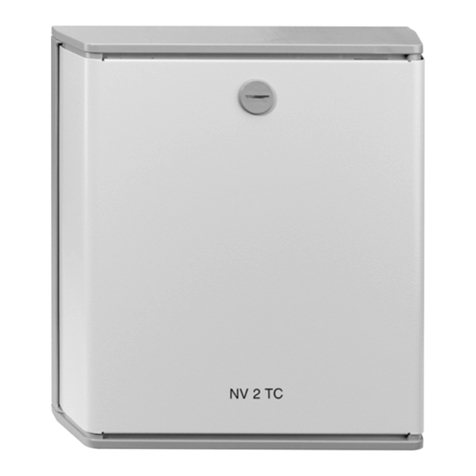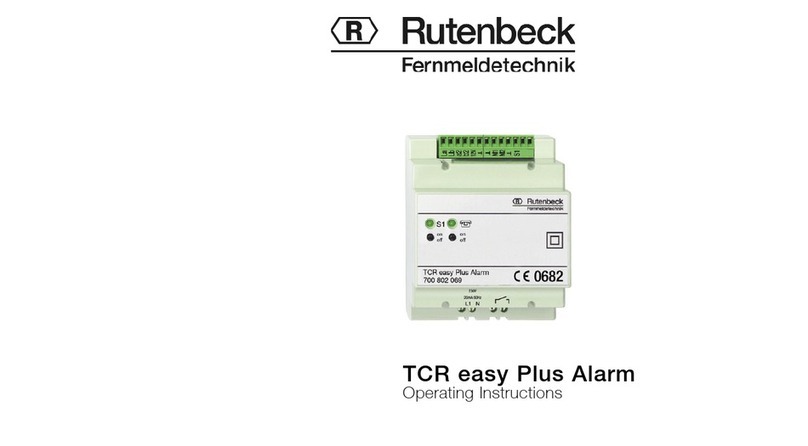
5
The TC easy Plus is a remote
switching and alarming de-
vice. It allows the switching
of five electrical devices and
can send off two alarm mes-
sages via the telephone net-
work. Each alarm input can
automatically dial a phone
number and notify with a
voice message, if an alarm
input has been activated by
a connected contact.
The switching takes place
with DTMF-signals (DTMF=
Dual-tone multi-frequency).
This can either be performed
with a DTMF-telephone or a
DTMF pocket dialer.
Individual user data are easy
to program by a telephone
call. The operation is sup-
ported by announcements.
The temperature can be ac-
quired via the telephone, if a
temperature sensor is con-
nected to an analogue input.
An alarm call can be initiated
if a temperature level is set.
Two of the five switching
outputs are equipped with
relays for the connection of
devices with low voltage up
to 48 V AC/DC. The remai-
ning three outputs deliver a
control voltage of 12 V/
150 mA for relays (i.e.
SAR 2 GB 500 101 05).
The TC easy Plus is placed
in a housing for surface
mounting.
The switching functions can
be carried out via the tele-
phone line as well as with
the built-in pushbuttons (s.
p. 10).
They will be protected by
use of a 4-digit code num-
ber.
All settings and switching
states of the outputs will be
saved during a power failure
and be restored after return of
power.
General





























